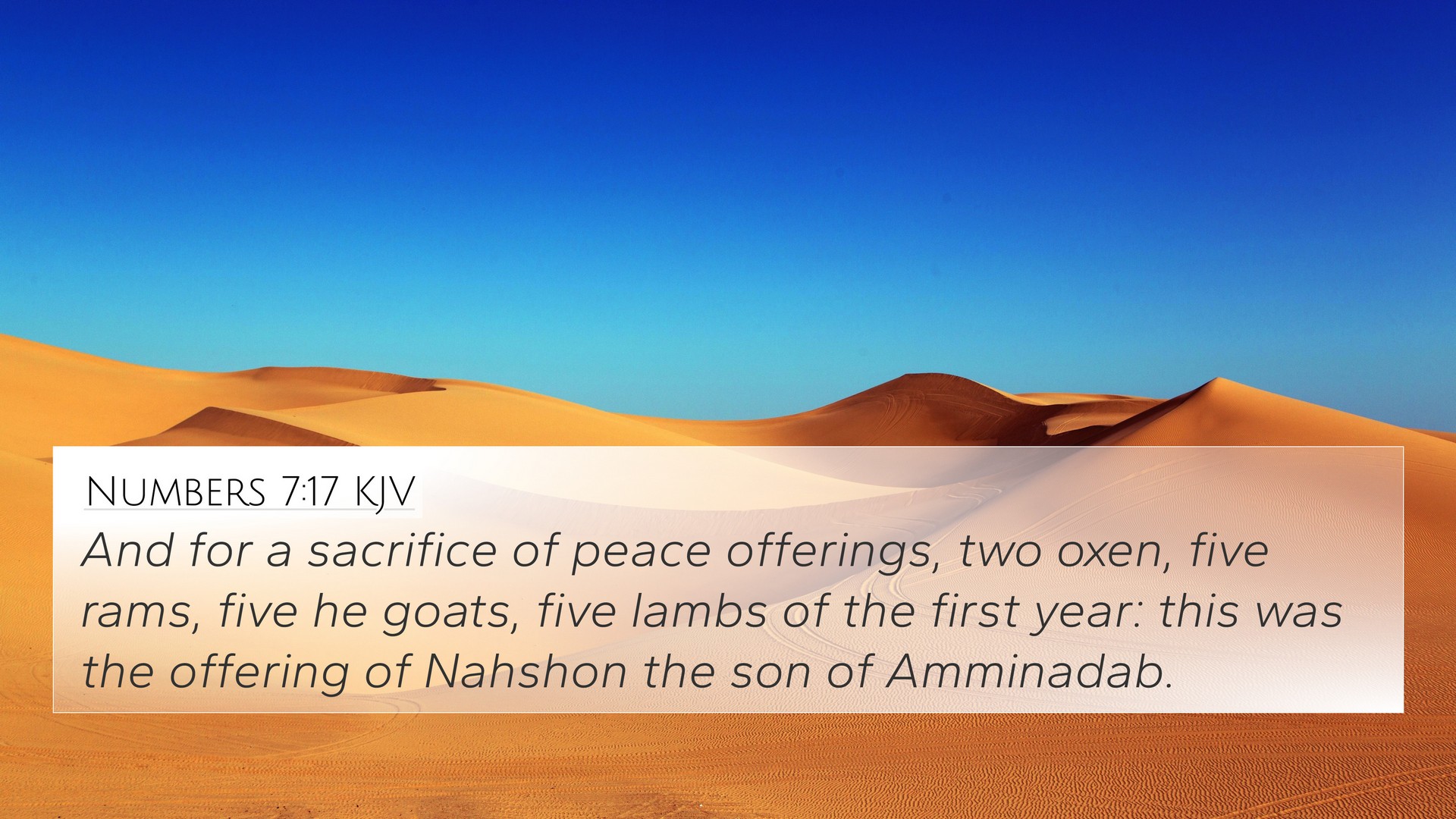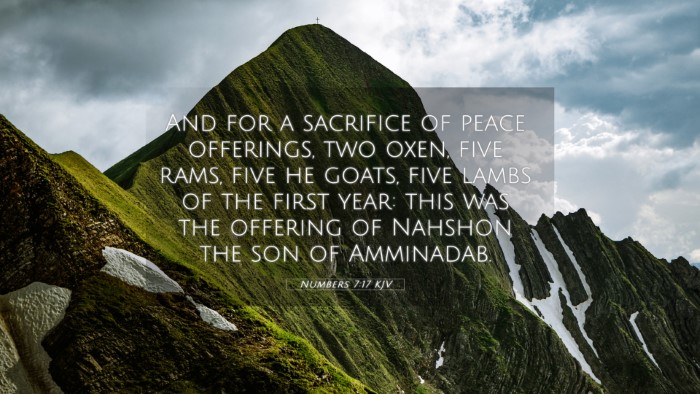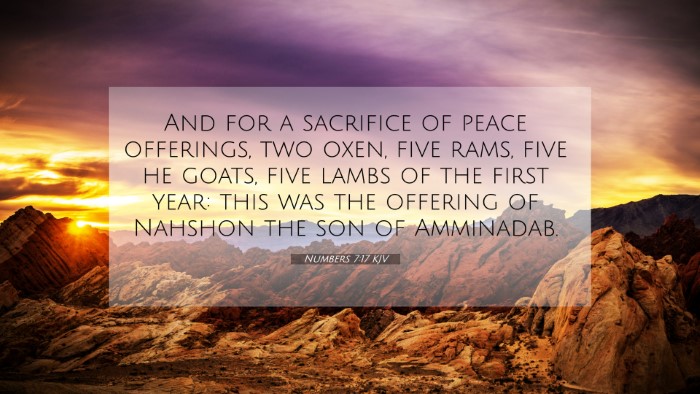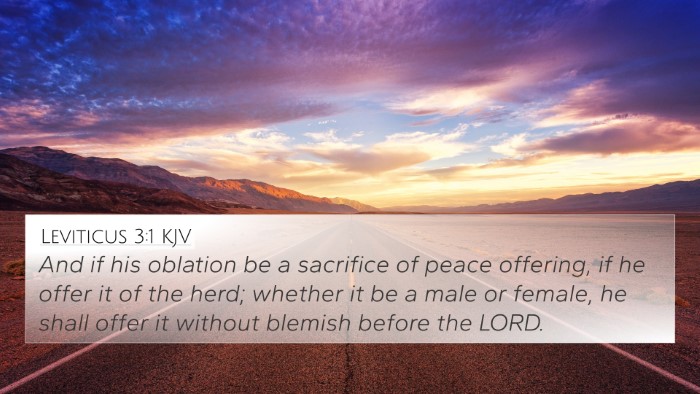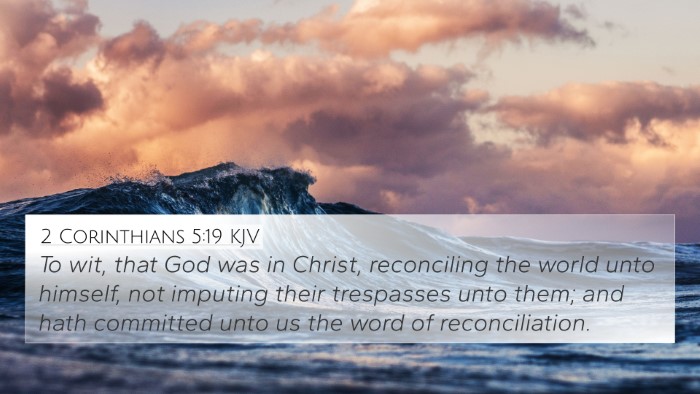Understanding Numbers 7:17
Numbers 7:17 states: "And one kid of the goats for a sin offering." This verse appears in the context of the offerings made at the dedication of the altar. The specifics of the offerings are detailed here, and various public domain commentaries provide insight into the significance of this particular offering.
Commentary Insights:
- Matthew Henry: Henry notes that the goat is offered for sin, representing the acknowledgment of human sinfulness and the need for atonement. It emphasizes God's provision for reconciliation through sacrifice. The offering of a goat signifies the seriousness of sin and the necessity of a substitute.
- Albert Barnes: Barnes explains that the ritual presented in this chapter symbolizes the establishment of the sacrificial system, which was integral to Israel's relationship with God. The kid of the goats represents a common sacrifice that individuals could offer for personal sin, further reinforcing the concept of communal atonement.
- Adam Clarke: Clarke highlights the significance of the sin offering in the Levitical laws. He points out that this verse illustrates God’s desire for His people to remain in a right relationship with Him through regular sacrifices, thus ensuring that they remain aware of their need for forgiveness.
Biblical Context:
This verse is situated in a broader narrative where the leaders of Israel present their offerings in dedication to the altar. The ritualistic nature of these sacrifices is a reminder of the holiness required to approach God.
Cross-References:
- Leviticus 4:23-24: This passage outlines the sin offering when an individual sins unknowingly, linking the need for atonement directly to personal and corporate responsibility.
- Hebrews 9:22: "Without the shedding of blood, there is no remission," connects the sacrificial system of the Old Testament to the New Testament understanding of Christ’s sacrifice.
- Romans 3:23-26: These verses speak to sin and the need for redemption, mirroring the themes in Numbers 7:17 regarding the sacrificial offering for sin.
- 1 John 1:7: It emphasizes the cleansing of sin through the blood of Jesus, inherently linked to the purpose of the sin offering depicted in Numbers.
- Isaiah 53:6: This prophetic verse indicates that all have gone astray, and like sheep, we require a payment for our transgressions, relevant to the understanding of sacrificial offerings.
- Exodus 29:36: This verse commands that a sin offering be made daily, reiterating the need for continual atonement as highlighted in our verse.
- Psalm 51:17: David emphasizes that God desires a broken spirit and a contrite heart, linking repentance to the acknowledgment of sin through offerings.
- Ezekiel 45:22: This verse discusses the sin offering in the context of the future temple, connecting to the sacrificial instructions seen in Numbers.
- Matthew 26:28: Christ’s declaration of His blood being poured out for many ties back to the themes of sacrifice and atonement that Numbers 7:17 embodies.
- Galatians 3:13: “Christ redeemed us from the curse of the law by becoming a curse for us,” signifies the transition from the Old Testament sacrificial system to the ultimate sacrifice of Christ.
Conclusion:
In summary, Numbers 7:17 serves as a pivotal verse in understanding the sacrificial system instituted by God for the reconciliation of His people. Through the cross-referencing of Biblical texts, we see a rich tapestry woven throughout Scripture that connects the need for atonement from the Old Testament through to the revelations found in the New Testament. The thematic connections highlight the unity of God’s message regarding sin and redemption.
Why Cross-Referencing Matters:
The methodology of cross-referencing is vital for a deeper understanding of Scriptural themes. Utilizing tools such as a Bible concordance or a cross-reference Bible study guide can help facilitate the discovery of related verses, allowing for comprehensive studies and enhanced sermon preparation. Understanding the interconnections between passages enriches the study of Scripture, allowing one to see the holistic narrative of redemption.
Moreover, finding the relationships between verses helps believers identify connections between the Old and New Testaments, making it easier to comprehend the overarching story of the Bible. Through this practice, one can also appreciate the prophetic links and fulfillments present throughout Biblical texts.
Resources for Cross-Referencing:
- Bible Concordance: A tool that organizes and lists words or phrases in the Bible, making it easier to find related verses based on keywords.
- Bible Cross-Reference Guide: Resources that provide a thematic arrangement of Bible verses that relate to specific topics, enhancing comparative analysis.
- Online Bible Study Tools: Websites and apps that offer cross-references alongside commentary and resources to explore the connections between Biblical themes.
- Bible Chain References: A method where key verses are linked together, forming a chain of related scriptural connections.
- Comparative Study Materials: Guides that help in analyzing the similarities and differences between various Biblical writings, especially in the Pauline epistles.
